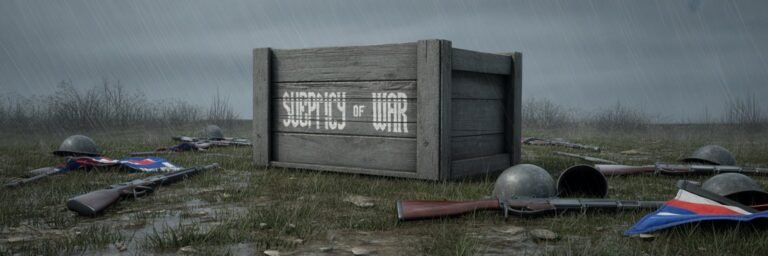INTRODUCTION
A shroud of fog unfurls across the landscape of human history, concealing centuries within its nebulous grasp. It cloaks many days of countless individuals who lived, laughed, loved, fought and passed in the ordinary, tangible trudge of existence, birthing a bounty of historical mysteries. Everyday life in historical times presents an intriguing labyrinth of enigmas, a chronicle narrated through shards of pottery, inscriptions on walls, forgotten texts and folk legends passed through time’s oral chute. Moments of joy, sorrow, conflict and peace are forever etched into humanity’s complex tapestry interspersed with cryptic whispers of our ancestors’ times.
HISTORICAL BACKGROUND
Our understanding of everyday life in historical times is typically drawn from multiple sources: archaeological evidence, historical texts and records, artistic depictions and oral histories. For instance, the Fertile Crescent, often referred to as the ‘cradle of civilization,’ offers rich insights into early agrarian societies. Archaeological excavations have unearthed mundane tools, farming equipment, and kitchen utensils indicative of sedentary life.
Medieval Europe bespeaks a fascinating tale of knights, serfs, monastic existence and feudal lords, while ancient Egypt, shrouded in mystique and grandeur, unearths a civilization remarkable for its medicine, architecture, and societal constructs. A cursory gaze across the Great Wall of China reveals tantalizing details of the Ming Dynasty’s economic prowess, bureaucracy, and military might.
THEORIES AND INTERPRETATIONS
The tapestry of everyday historical existence is often subject to varying interpretations and theories. Historical positivism, represented by Leopold von Ranke, argues that historical study’s primary goal is to chronicle past events “as they actually happened.” This approach, focusing on objectivity, details, and empirical evidence, offers a granular examination of historical societies.
Contrarily, postmodernists assert historical evidence is open to interpretation due it being a product of human cognition and biases, thereby questioning the certainty of ‘historical truth.’ Michel Foucault’s ‘genealogy,’ for instance, argues for the study of history to understand power relations and societal constructs.
MYSTERIES AND CONTROVERSIES
The panorama of historical mysteries is an inexhaustible mine, towering monoliths of enigmas that continue to intrigue historians and archaeologists. Take, for instance, the case of the Mayan civilization, whose sudden collapse remains an unsolved puzzle. Similarly, the disappearance of the Roanoke colony, known as the ‘Lost Colony’ in the late 16th century, continues to be shrouded in uncertainty.
In the realm of controversies, the Arthurian Legends are a subject of constant debate. Was King Arthur a historical figure rooted in the concrete soil of history, or merely a mythic creation sprung from the fertile imagination of troubadours and chroniclers?
SYMBOLISM AND CULTURAL SIGNIFICANCE
The symbols etched into the walls of caves or sprawling across grand temples, palaces, and tombs carry rich cultural significances. Cave paintings in Lascaux, France, provide evidence that prehistoric men elaborately decorated their caves with symbols believed to be associated with their spiritual beliefs, hunting practices, or day-to-day lives.
In ancient Egypt, symbolism pervaded daily life and afterlife, from architecture to art, jewelry, clothing, and language — each symbol embedding a unique cultural significance. The ankh symbolized life, fertility and the sun, while the Eye of Horus represented protection and healing.
MODERN INVESTIGATIONS
Modern technology has unraveled much about everyday life in historical periods, from advancements in archaeological practices to the application of advanced imaging techniques and artificial intelligence. Forensic archaeology, for instance, offers a mosaic of information about physical health, diet, daily activities, and death in the past.
Satellite imaging and ground-penetrating radar are revolutionizing archaeology, revealing undiscovered sites and buried structures, particularly evident in the recent discoveries at Stonehenge and Maya ruins. Technological advances are interpolating gaps in our understanding and illuminating these past lives from shadows of obscurity.
LEGACY AND CONCLUSION
The historical mysteries of everyday life etch an indelible legacy, informing not merely our perception of the past, but also shaping our present and potentially the future. They serve as epochs of human development, vestiges of cultures, and wellsprings of knowledge, awakening an urge to rediscover the chronicles of human struggle, triumph, and resilience.
In conclusion, while historical mysteries may veil many secrets of everyday life in the past, each unravelled thread draws us closer to understanding our shared narrative. Every artifact excavated, every manuscript deciphered, every theory crafted, each contested interpretation extends our comprehension of man’s journey on this terra firma. As the fog lifts, albeit inchmeal, we delve deeper into the labyrinth, nourishing the roots of our collective existence. History, therefore, is not just a remembrance of the past, it is indeed the compass guiding us through a multifaceted, immersive human continuum.






